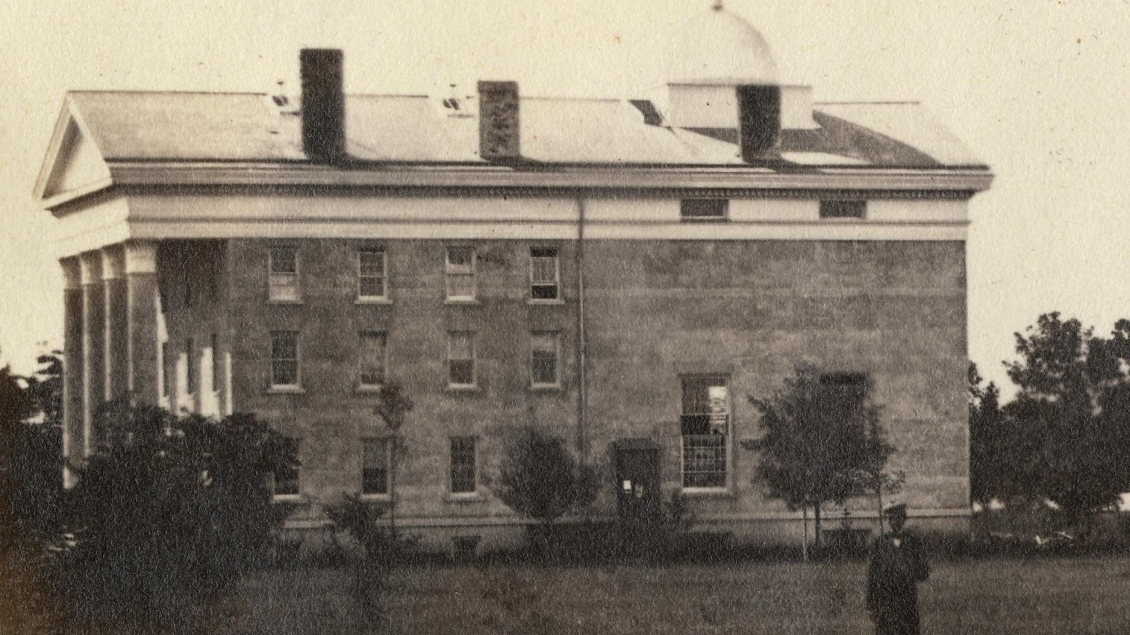
Laying a Foundation
From the University of Michigan's founding in 1837 to the graduation of the first class of medical students in 1851, our early years were marked by growth and excellence.
From the University of Michigan's founding in 1837 to the graduation of the first class of medical students in 1851, our early years were marked by growth and excellence.
Prompted by a petition from local physicians, a report by Dr. Zina Pitcher recommending a Department of Medicine is accepted by the university. The initial approval allows for three faculty and $3,000 to build a medical building; these grow to five faculty and $10,000 by the time the department welcomes its first students. U-M is the first university to make its medical school a full part of the university, with physicians as faculty, and sets out to make the school “an example worthy of imitation.”
The “laboratory,” or medical building, is completed on the Diag, with a design modeled on a Greek temple. A five-member faculty in the fall welcomes 90 “matriculants” and 5 “honorary students” to a six-month series of lectures.
The Medical Department graduates its first six students, all of whom entered with advanced standing (having already served an apprenticeship to a practicing physician). For tuition of $5, they attended six months of lectures and clinical demonstrations led by faculty involving a patient from the local community.
In 1852, Henry Phillip Tappan, who had been professor of philosophy at New York University and had spent time in Europe, arrives in Ann Arbor with his family to become the University’s first president.
In 1854, Corydon L. Ford, a friend of fellow professor Moses Gunn from their days at Geneva Medical College in New York, is appointed professor of anatomy.
A Chemical Laboratory – the first building at any U.S. university devoted to chemistry – opens behind the Medical Building. Medical students, and other students, learned chemical analysis and preparation of medications, which many practicing physicians at the time had to do themselves.
Overcrowding and hygiene concerns make the expansion or replacement of the Medical building the university's "greatest immediate necessity.” A four-story addition to the original building opens in 1965, more than doubling its space, and adding a new space for anatomical dissection and two 600-seat theaters for lectures and clinical demonstrations. The addition was funded in part by donations from the citizens of the City of Ann Arbor.
The Medical School’s 525 students now make up a large part of U-M’s 1,255-member student body. About 300 patients a year turn to the medical faculty for care, staying in local rooming houses before having examinations or operations in front of watching students.
In 1869, after the state legislature approves funding, a professor’s house on North University Avenue is turned into a modest hospital of 20 beds for patients who are operated upon in the Medical Building. One of the first buildings built for U-M in Ann Arbor in 1840, it stood on the spot where the current Chemistry building stands.